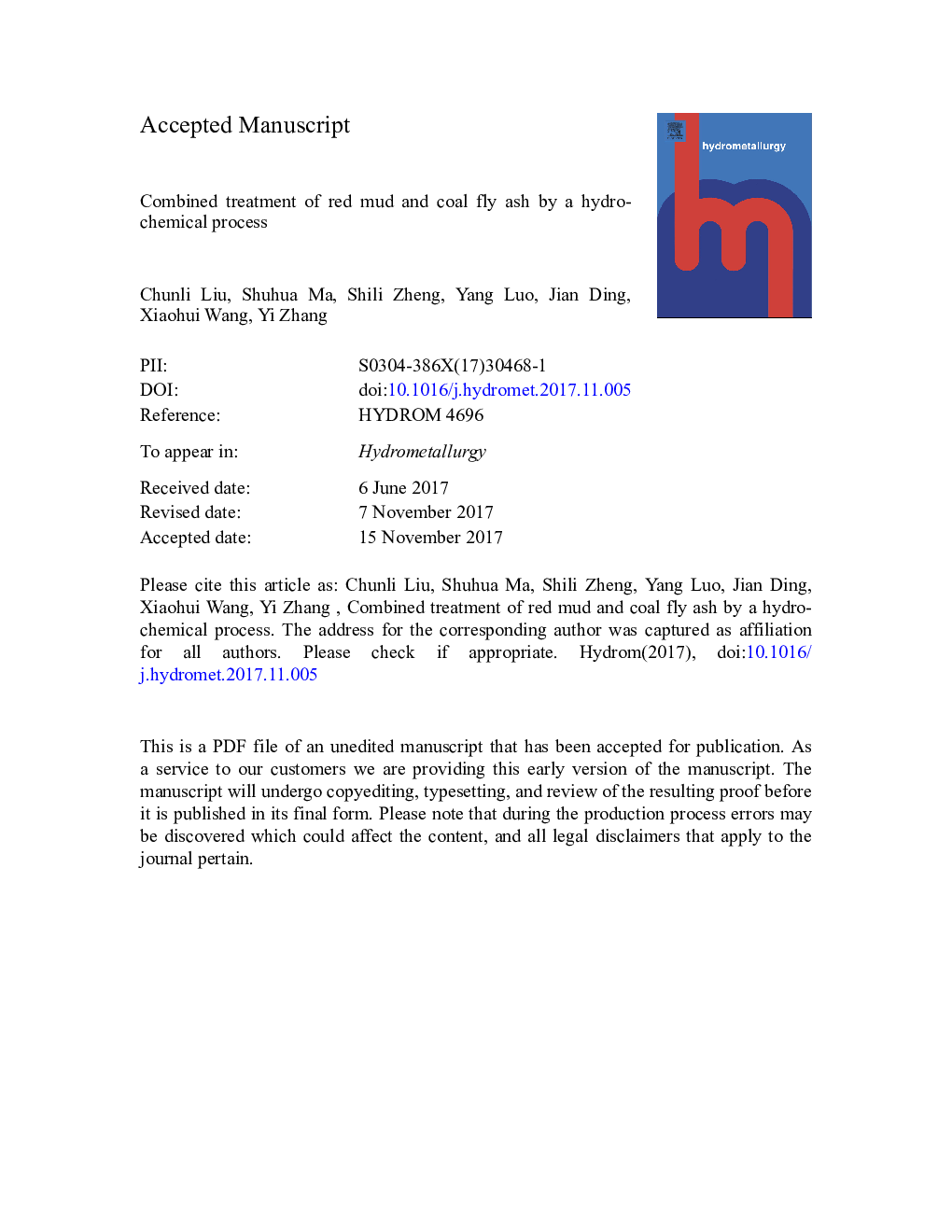| Article ID | Journal | Published Year | Pages | File Type |
|---|---|---|---|---|
| 6659085 | Hydrometallurgy | 2018 | 22 Pages |
Abstract
Red mud (RM) is a solid waste produced in the process of alumina extraction from bauxite and causes serious environmental problem. The recycle of alumina and alkali from RM by hydro-chemical process is believed to be an effective method for the utilization of RM. However, this industrial application has been limited for its difficulty in the solid-liquid separation of leached slurry and the low alumina extraction efficiency. In this paper, a novel process for the combined treatment of RM and coal fly ash (CFA) was proposed, and the effect of the mass ratio of CFA to RM, the Fe2O3 content and A/S (mass ratio of Al2O3 to SiO2) of the CFA on the extraction alumina efficiency and the filtration rate of leached slurry were investigated. When the CFA with A/S of 1.35 was used and the mass ratio CFA to RM was 1:1, the alumina extraction efficiency can be elevated from 72.14% to 91.70%. Especially, the filtration rate of leached slurry increased from 0.308 m3/(m2·h) to 1.264 m3/(m2·h). In addition, by decreasing the Fe2O3 content and increasing the A/S of CFA, the filtration rate of leached slurry could be enhanced obviously and the alumina in the mixture of RM and CFA could be extracted effectively. The results of phases and morphology of the residues showed that the increase of alumina extraction efficiency is attributed to two chemical processes, one is the complete transformation from Na8(Al6Si6O24)(OH)2.04(H2O)2.66 to NaCaHSiO4, and the other is the reduction of the generation of Ca3(Fe0.87Al0.13)2(SiO4)1.65(OH)5.4 with the increase of mass ratio CFA to RM. Furthermore, the growing number and length-diameter ratio of the rod-like structure of NaCaHSiO4 particles resulted in the increase in the filtration rate of leached slurry.
Related Topics
Physical Sciences and Engineering
Chemical Engineering
Chemical Engineering (General)
Authors
Chunli Liu, Shuhua Ma, Shili Zheng, Yang Luo, Jian Ding, Xiaohui Wang, Yi Zhang,
